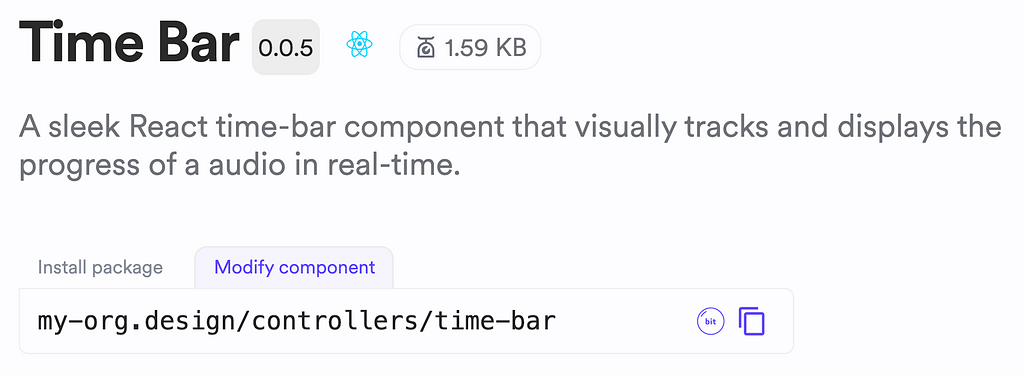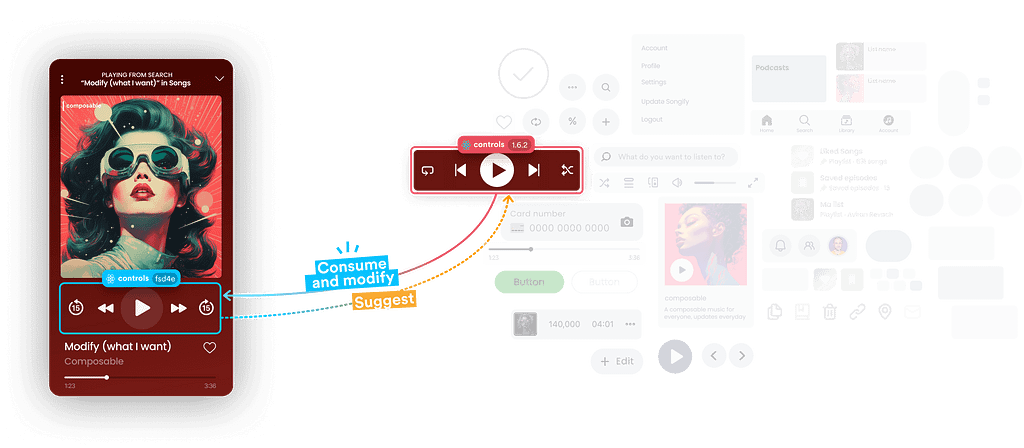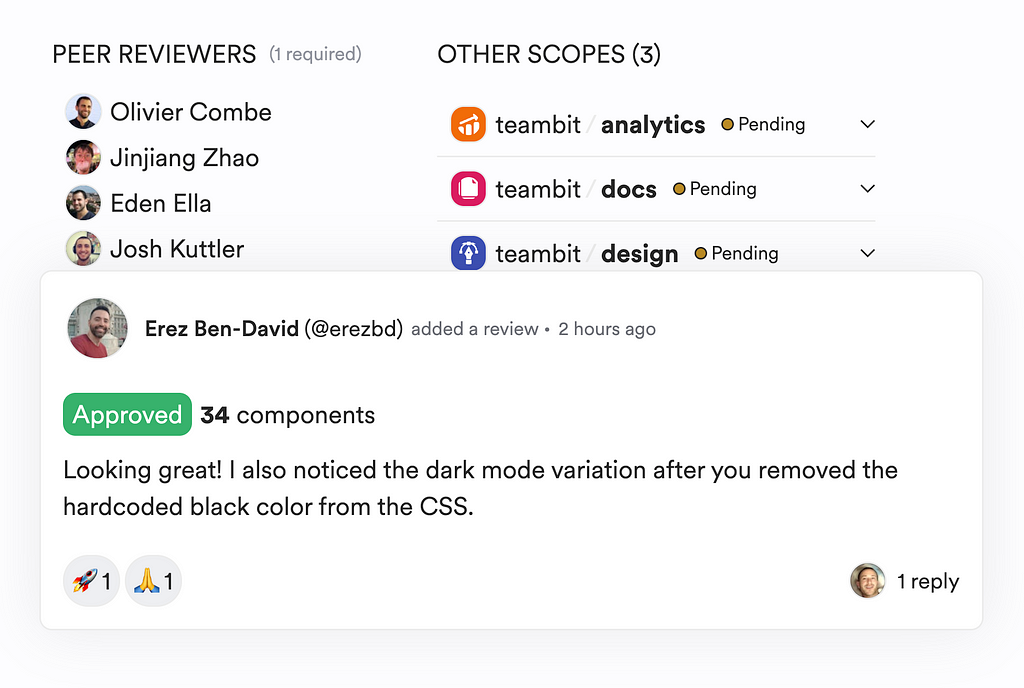This content originally appeared on Bits and Pieces - Medium and was authored by Mike Chen
How to balance code reuse, standardization and flexibility in development with Bit’s next-generation packages, Bit components

In the evolving landscape of software development, Bit’s “Install-First, Edit-When-Necessary” workflow offers a dynamic approach to component integration and customization. This methodology not only streamlines development but also enhances collaboration and code quality.
How the Workflow Operates
1. Initial Installation
You begin by searching your company’s component collection on Bit platform for the components you need, and installing them as immutable node packages, ensuring stability and predictability in your projects.

Bit components can be installed using bit or standard package managers like npm, pnpm and yarn.
bit install @my-org/design.controllers.time-bar
npm install @my-org/design.controllers.time-bar
2. On-Demand Editing
If you need customization beyond what the component’s current API supports, you can import its source files and configuration into your project. This enables you to make tailored modifications without starting from scratch.
A Bit component is imported using its ‘Component ID` rather than its package name.

bit import my-org.design/controllers/time-bar
A bit import operation, in this context, can be thought of “ejecting” a package. The formerly installed package is now re-compiled on every change made to the component’s source files.
.
├── my-org
│ └── controllers
│ └── time-bar # the component source files
├── node_modules
│ └── @my-org
│ └── controllers.time-bar # re-compiles when the source files change
3. Reintegration and Sharing
After edits, the updated component can be versioned and exported back to Bit platform, making it available for reuse across other projects.
This process usually requires approval from the component maintainer. However, your changes are available for your project immediately, even before they are approved and released as a new version.

Encouraging Component Reuse and Minimizing Redundancy
- Component Maintainer Perspective: Bit enables developers to share components with an API that meets their immediate needs, without the necessity to design for all possible use cases. Other developers can adopt the existing API or extend it to suit their requirements, fostering an iterative enhancement process that leads to robust, reusable components.
- Component Consumer Perspective: Proposing changes to a component is straightforward, eliminating the need for disruptive context-switching or navigating unfamiliar projects. This ease of contribution encourages collaboration and ensures that improvements can be implemented promptly, enhancing the overall development experience.
Facilitating Seamless Change Suggestions
Bit’s workflow supports the use of ‘lanes’ to suggest cross-component changes without affecting the main development course.
Developers can create a new lane, make the necessary modifications, and submit a change request for review. This process allows for collaborative development and ensures that proposed changes can be evaluated and integrated efficiently.

Immediate Impact of Changes
One of the significant advantages of Bit’s workflow is that changes can affect the current project even before they are approved by the maintainer and released for other projects. By importing and modifying a component locally, developers can implement and test changes in their projects immediately. This real-time integration facilitates rapid development and allows for immediate feedback, which is crucial for agile methodologies.

Key Benefits
- Optimized Workflows: Quick integration of pre-built components accelerates development, while on-demand editing ensures time is spent efficiently.
- Stability and Flexibility: Immutable components provide reliability, and the ability to customize them adds adaptability without disrupting the original design.
- Enhanced Collaboration: Versioning and exporting edited components make shared development seamless, allowing teams to build upon each other’s work effectively.
- Improved Development Experience: Simplified workflows reduce logistical bottlenecks, enabling developers to focus on solving real problems.
Practical Use Case
Consider a team utilizing a shared “Button” component across multiple applications:
- The “Button” is installed via npm, offering default styling and functionality.
- In one project, the team requires a custom hover effect. They import the source files, make the necessary adjustments, and implement the changes immediately in their project.
- The updated “Button” is then versioned and exported back to the Bit scope, becoming available for other teams to reuse or further refine.
Conclusion
Bit’s “Install-First, Edit-When-Necessary” workflow revolutionizes component-based development by combining stability with flexibility. It encourages component reuse, minimizes redundancy, and facilitates seamless collaboration.
By allowing immediate implementation of changes, it supports agile development practices and enhances the overall efficiency of software projects.
Explore Bit’s platform to leverage this workflow and elevate your development process.
The Install-First, Edit-When-Necessary Workflow was originally published in Bits and Pieces on Medium, where people are continuing the conversation by highlighting and responding to this story.
This content originally appeared on Bits and Pieces - Medium and was authored by Mike Chen
Mike Chen | Sciencx (2024-12-25T12:14:53+00:00) The Install-First, Edit-When-Necessary Workflow. Retrieved from https://www.scien.cx/2024/12/25/the-install-first-edit-when-necessary-workflow/
Please log in to upload a file.
There are no updates yet.
Click the Upload button above to add an update.
